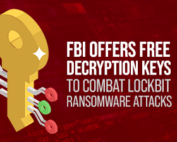Blog
The Power of Password Management, Just-in-Time Access, and Multi-Factor Authentication
Share:
Safeguarding our online presence against cyber threats is paramount. With a multitude of online accounts holding sensitive personal and financial information, the importance of robust password management cannot be overstated. Yet, managing numerous complex passwords across different platforms presents a significant challenge. This is where password management solutions step in, providing users with a secure and convenient way to handle their credentials. Additionally, emerging techniques such as just-in-time access offer added layers of protection against potential cyber breaches. When combined with multi-factor authentication (MFA), these strategies create a formidable defense against unauthorized access. Let’s explore how these technologies work together to enhance online security.
The Imperative of Strong Password Management
Passwords serve as the primary line of defense against unauthorized access to our accounts. However, the average internet user contends with a multitude of accounts across various platforms, from social media and email to banking and e-commerce websites. This proliferation of accounts often leads to the temptation of using weak or recycled passwords, both of which pose significant security risks.
Password management solutions address these challenges by allowing users to generate and securely store complex, unique passwords for each account. These applications typically encrypt and store passwords in a secure vault, accessible only through a master password or biometric authentication. By centralizing password management, users need only remember one strong password, significantly reducing the risk of compromised accounts.
Exploring Password Managers
Password managers come in various forms, ranging from standalone applications to browser extensions and built-in features in operating systems. They offer a range of features beyond password storage, including password generation, automatic form filling, and synchronization across multiple devices. Popular password managers like LastPass, Dashlane, and 1Password have gained widespread adoption due to their user-friendly interfaces and robust security measures.
One key advantage of password managers is their ability to generate and store long, complex passwords consisting of random combinations of letters, numbers, and symbols. These passwords are virtually impossible for humans to memorize but greatly enhance security by thwarting brute-force and dictionary-based attacks.
Introducing Just-in-Time Passwords
While traditional password managers provide a secure repository for storing credentials, just-in-time passwords introduce an innovative approach to authentication. Instead of static passwords, just-in-time passwords are dynamically generated for each login attempt and are valid for a single use or a short period.
This approach adds an extra layer of security by mitigating the risks associated with password reuse and theft. Even if an attacker manages to intercept a just-in-time password, its limited validity renders it useless for subsequent login attempts. Just-in-time passwords are often delivered through secure channels such as email or SMS or generated using authenticator apps or hardware tokens.
Embracing Multi-Factor Authentication (MFA)
While password management and just-in-time passwords are powerful tools for fortifying online security, they are further strengthened by the incorporation of multi-factor authentication (MFA). MFA requires users to provide two or more forms of verification before granting access to an account. These factors typically include something the user knows (such as a password), something they have (such as a mobile device or hardware token), or something they are (such as a fingerprint or facial recognition).
By adding an extra layer of verification beyond passwords, MFA significantly reduces the likelihood of unauthorized access, even if passwords are compromised. This additional hurdle makes it exceedingly difficult for attackers to gain entry, enhancing overall security.
Adopting a multi-pronged approach to online security is essential. Password management solutions, just-in-time passwords, and multi-factor authentication collectively provide a robust defense against unauthorized access and potential breaches. By incorporating these technologies and adhering to best security practices, individuals can significantly reduce the risk of falling victim to cyberattacks and protect their digital assets effectively. Remember, when it comes to online security, proactive measures are key to staying one step ahead of potential threats.
Related Posts
Get a Free Consultation
Fill out the form below to get a free consultation and find out how we can make your technology hassle-free!





